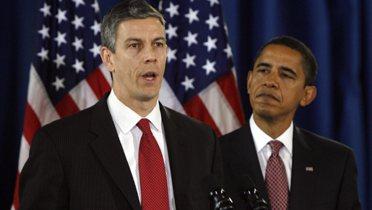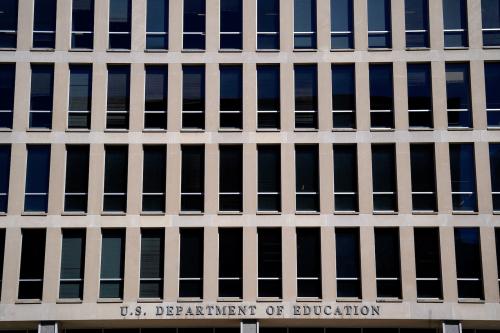Given a choice between the status quo in American education and change, who would not choose change? The Obama administration has been bold in pursuit of change. The president and Education Secretary Arne Duncan have used the bully pulpit and the powerful lever of $5 billion in discretionary stimulus funds to push a catalog of initiatives.
Teacher merit pay, more charter schools, a longer school year, common state standards and assessments, data systems that link student gains to individual teachers, more investment in preschool, teaching and assessing 21st century skills, more generous Pell grants, eliminating subsidized private lending in favor of federal direct college loans, more support for community colleges, reform of teacher preparation, closing low performing schools, using multiple measures for accountability, having schools provide neighborhood services, and rewarding education innovation are on the list of reforms they have actively pursued.
Give the administration an A for motive, effort and reach. Give them an A+ for wiliness in getting states to change their policies toward those favored by the administration in order to qualify for a competition for $4.3 billion in Race to the Top funds that few will win. With state coffers empty and demands for education funding unabated, states have gambled on a long-odds bribe from Washington. Much of what the administration could hope to get from states on education reform has been gotten in the first year and before a dollar of discretionary funding has been spent.
Change doesn’t not necessarily portent progress. A fair test of whether any of this will make much of a difference in student achievement will require the perspective of years. Consider just one of the reforms: common standards and assessments. How many of the 48 states that signed onto the initiative will remain committed after they are losers in the competitions for funding? If they all hang in, will the standards and assessments be of high quality? If they are, how long will it take to implement them at the state level? After they are implemented, how long will it take for teachers and schools to align their curriculum and instruction with them? This will take a while to play out even if all goes well.
Further complicating an assessment of success is the multiplicity of reform initiatives. The administration has not provided a narrative of their interconnections. As a result, both the policy for change and its results may be seen as anarchic and impossible to evaluate. Finally, as I have argued previously, the administration has made some questionable bets and ignored surer ones, most specifically improvements in curriculum and instruction. Still, the administration has been audacious in its public messages and skillful in its management of discretionary funds in advancing its agenda of reform. They’ve had a good first year.
The Brookings Institution is committed to quality, independence, and impact.
We are supported by a diverse array of funders. In line with our values and policies, each Brookings publication represents the sole views of its author(s).




